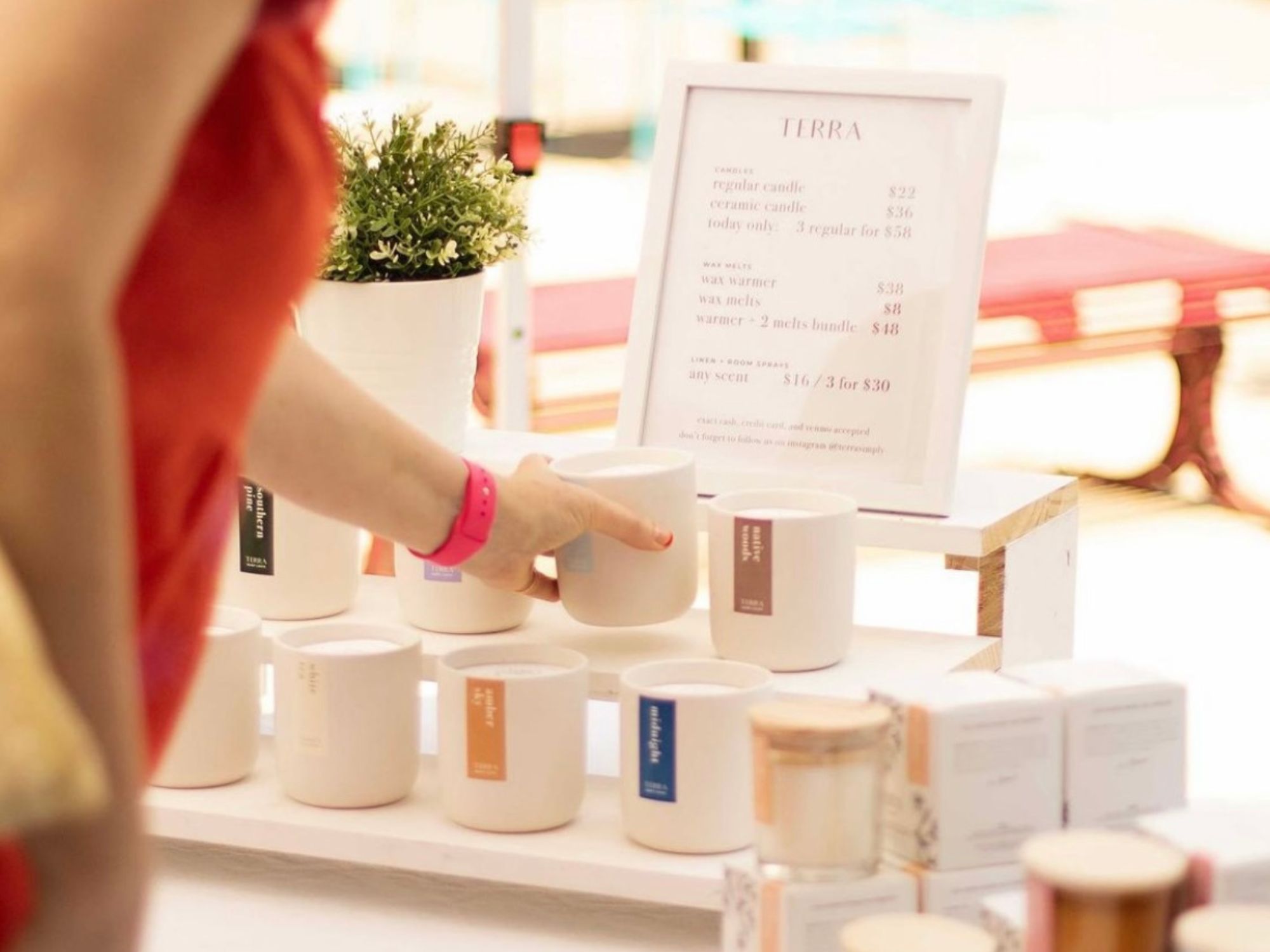
Selling at farmer’s markets and pop-ups are a great way to connect with customers and make sales. There are many things involved to make farmer’s markets and pop-ups successful as a vendor. We know that these types of events allow handmade businesses to sell their products and gain more brand exposure. These opportunities are perfect when you are just starting because it allows you to see which products are your best sellers, whose your target audience, engage in networking, and converse with your customers.
In this article, you’ll learn how to get started selling at farmer’s markets, tips for success for selling at farmer’s markets and pop-ups, and how to prepare your inventory for farmer’s markets and pop-ups.
The Difference Between Farmer’s Markets and Pop-ups
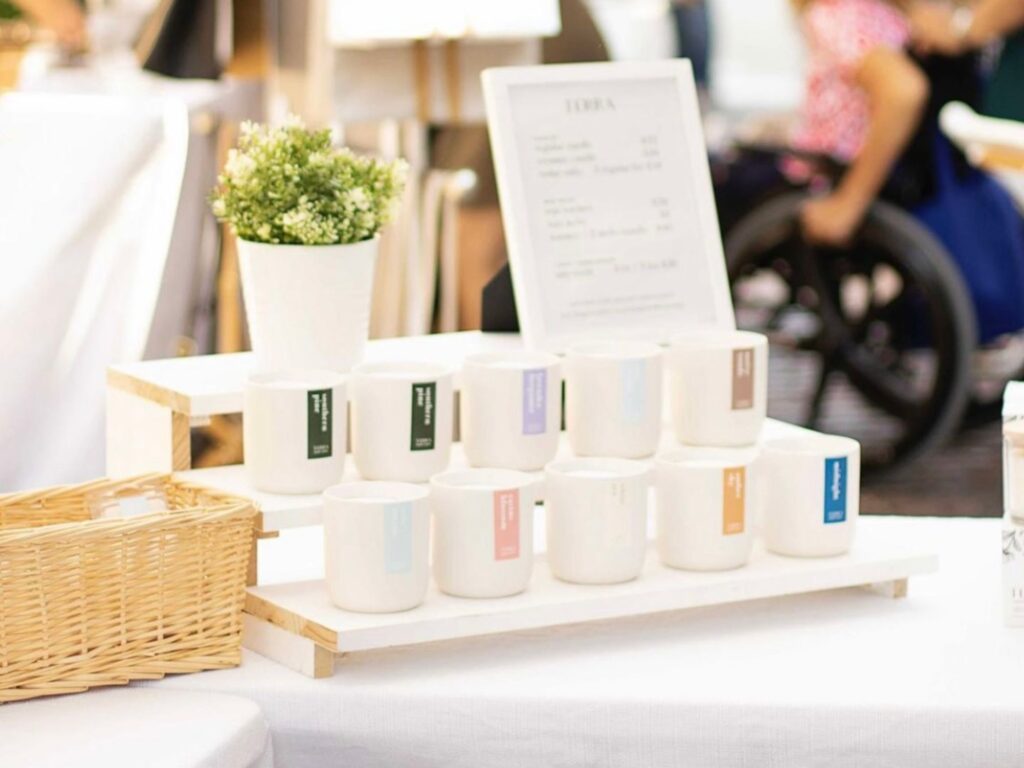
A farmer’s market is a physical retail marketplace that gathers local producers intended to sell their products directly to consumers. Farmer’s markets may be indoors or outdoors and typically consist of booths, tables, or stands. Pop-up shops, on the other hand, are a relatively low-cost option for brands to sell in person. They are mainly a place for brands to display their products to potential customers.
The ultimate goal of pop-ups is to build brand awareness and generate sales on the spot. For example, if you have a skincare brand, you can partner with a company that sells handmade soaps and hold the event at a beauty studio.
Benefits of Being a Vendor
Building Relationships with New and Existing Customers
There is truly no better opportunity to physically meet your customers in the field than to start selling at farmer’s markets. You should be prepared to share your story and brand identity. This is the key to creating engagement and a long-term relationship with the people who you are interacting with. Practice you conversational skills. Silence will not make your customer’s experience with you a memorable one. You’ll want to create a friendly atmosphere as a vendor. Bonus points if you can find a common interest to talk about with your customers.
Pro tip: While engaging with your customers, don’t be afraid to ask them questions about what they are looking for in your products. This is a great conversation opener and can lead to naturally generated sales.
Brand Exposure
Farmer’s markets and pop-up events can help you be noticed by your potential customers. These opportunities are ones you will always want to take advantage of in the early stages of your handmade business. It will be very crucial to the success of your business to continue to attend farmer’s markets and pop-ups regularly. The more frequently you attend these events as a vendor, the better you’ll be at them.
Additionally, you’ll get to be known better in the handmade community. Your main goal is interacting with your customers, but you should be prioritizing interacting with other handmade business owners in your niche. It’s important to have a community to turn to when you need it. Lastly, you’ll build brand loyalty.
Testing the Market with Your Products
When selling at farmer’s markets and pop-ups, you’ll be able to see how well your products are selling. This is a great time for you to seek feedback from real customers. Do not be afraid to ask your customer’s their opinions about your handmade goods. This is information very important to the success of your handmade business.
With this being said, practice being open minded and not getting upset when a customer is a little too honest with you. The feedback from your customers is one of the most valuable tools you will carry as a handmade business owner.
Experimenting with Different Locations
Farmer’s markets and pop-up events are a good chance for your to evaluate how well your products sell in different areas. When considering where your products sell best, you’ll want to look at the demographic of your client base. Are most of your clients women or men? What is their age rage? What type of careers do they have?
These are all questions you’ll want to consider when doing research on the best locations to sell your handmade products. The performance of how well your items sell at farmer’s markets and pop-ups in each location you attend can help you determine where your client base is. This is one of our best tips for pop-ups.
Affordability of Markets
Selling at farmer’s markets and pop-ups is a great opportunity for new businesses that don’t yet have the funds to lease a more traditional retail space. There are typically booth feeds associated with farmer’s markets, which you’ll want to consider before committing. How
ever, the cost usually is made back and then some.
This is why it’s so important to do location research about your audience prior to attending your first farmer’s market or pop-up event. You want to make sure you’re hitting your best chances at selling your handmade products at a steady rate.
Tips to Preparing for Farmer’s Markets and Pop-Ups
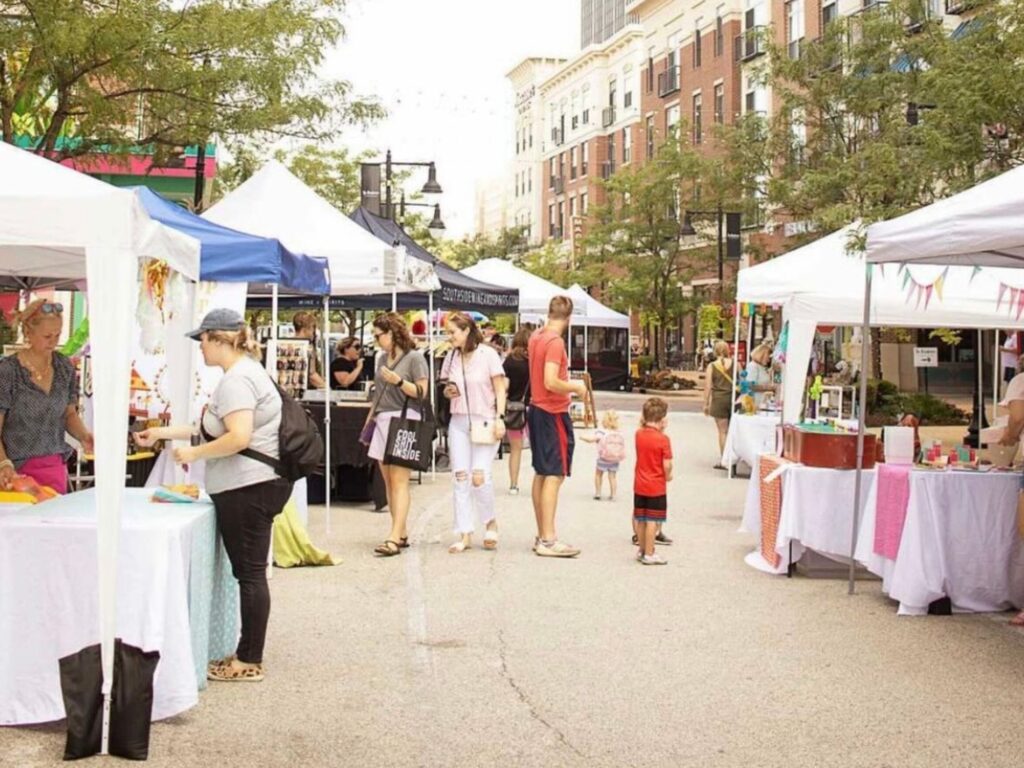
Set Goals for Yourself
We know that farmer’s markets and pop-ups can be very unpredictable events. However, setting goals is a great way to see if you’re on track with your expectations. At the very least, you’ll want to see if you’re making the money back that you spent on booth fees and set up supplies.
Consider setting both short-term goals, and long-term goals. Your goals should be both attainable and a challenge. If it’s too easy, you’re likely not setting the goals high enough. A good example of a goal for your first farmer’s market or pop-up is sell X amount of products and making sure you’re interacting with each customer that visits your booth. Goal setting could also be networking related, as well!
Visit Farmer’s Markets and Pop-ups Beforehand
One of the biggest factors for success will be how much exposure you have to these types of events before you attend one as a vendor. You need to find farmer’s markets and pop-ups that align with your brand and the goals you want to accomplish. The best way to know if you’re going to align with a farmer’s market or pop-up is to go see it for yourself.
This is also another great opportunity to explore the market that your business is immersed in. See what your competitors are doing and how they are doing it. This leaves room for networking, as well.
Have a Marketing Strategy
Let people know where are you going to be and how to find you! Share the date and location of the farmer’s market or pop up. You should do this before and during the event. Try to be very active on social media so people can be aware of what you’re doing. You’ll want to create excitement around the event you’re going to attend. This will create a sense of wonder and curiosity to your customer base.
Pro tip: You can leave cards or QR codes on your booth table that has all your social media information. Let new customers know how to keep in touch with you. We recommend getting a small plastic or laminated stand for these marketing tools so it’s presented well on your table, and won’t get lost in the mix of everything else.
Prepare the Necessary Paperwork
Before buying supplies, decorations, etc., you need to know what paperwork are you going to need to be a vendor. For example, this could be the licenses and permits for the products you sell. If you don’t have this yet, you should start preparing everything to be ready when an opportunity comes. This isn’t only a tip for when you attend farmer’s markets and pop-ups, but a good business tip to be aware of. For your business to run legally, you will need to have these items in order.
Create a Checklist
When selling at farmer’s markets and pop-ups, you’ll want to be as organized as possible. It’s wise to create a list before the event of supplies you’ll need to get your booth in tip top shape and run operations smoothly. We have already started this checklist for you which you can read here. However, some of the times you’ll want to consider are tables and chairs, shopping bags, a price list, payment reader and cash, plus more!
You will also want to include an inventory check list. Keep track of the items your bringing and the items that you’re selling. You will want to update your inventory system after the event so it reflects the items you sold.
Pro tip: Don’t assume any event host for farmer’s markets and pop-ups supply any tent or tables for your booth. Most of the time, you will be responsible for supplies these items yourself. You should consider investing in these items well before you actually attend the event to make sure everything is functioning properly.
Preparing Your Inventory
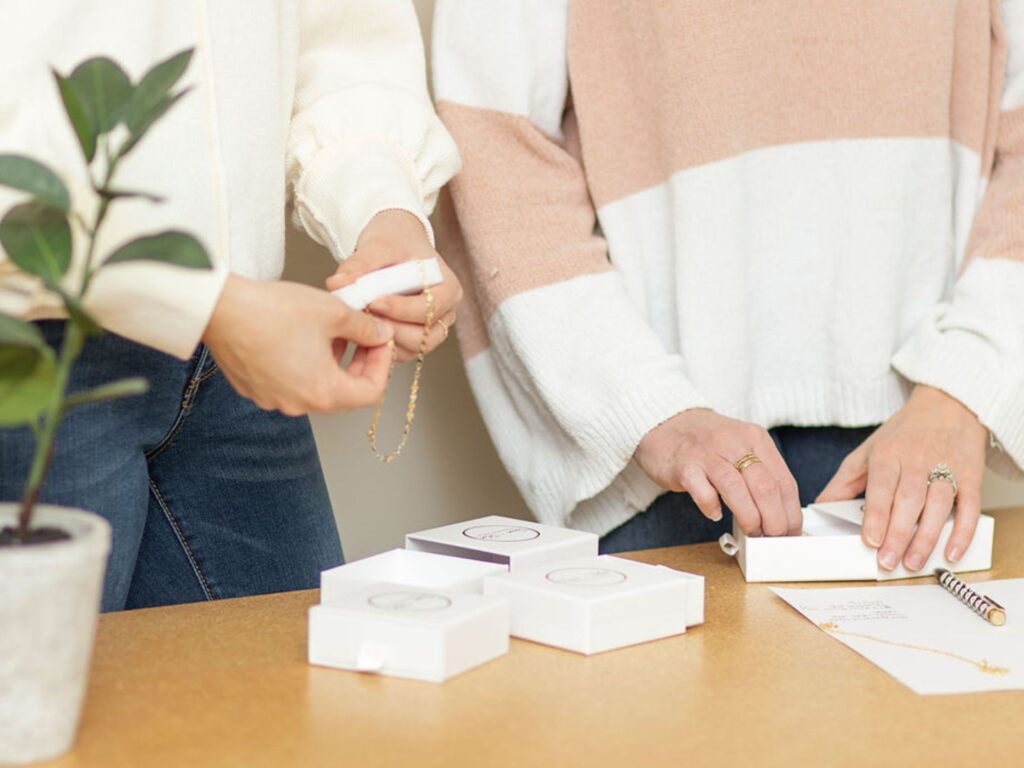
We know that one of the most important things to do before selling at farmer’s markets and pop-ups is to have enough inventory. It’s always better to have too much inventory than not enough.
You don’t have to display all of your inventory at your booth or table when you start selling at farmer’s markets. However, you need to have more products available to restock when you start selling your handmade goods. The big question to consider is how to prepare your product inventory to be most successful in your endeavors. You will want to make sure that you’re prepared for production in the case that you sell a lot of products at the event.
Before you decide to produce a new product, it’s important to evaluate your existing inventory. Taking stock of your marketing efforts can help in planning your inventory. It’s necessary to do this, because you’ll need to see projections and understand the expectations around how many products you might sell. Start by estimating your demand. If you expect a low turnout, you won’t need to produce additional products.
The more you know about how your marketing efforts are being targeted, the better you can prepare on the backend. For well-marketed events focused on your niche, expect a 5-20% conversion rate on people attending who will spend. However, this number can change, this is a good estimate to start with when you’re first beginning.
You should ask yourself “how much existing product do I have?” Is it enough for the space you have allocated? Calculate some quick math in your head to assess your products against your tables, shelves, and other displays. Remember, if you need help calculating the actual prices of your handmade products, you can always reference this article to understand how to price your handmade goods.
Do you have your bestsellers on hand? Your bestsellers are the products that your customers are buying most frequently from you. Consider reintroducing older bestsellers, or show a new product during at your booth during the farmer’s market or pop-up. Customers love to see and buy popular limited edition and brand-new items. Keep this in mind when you attend events.
One last piece of advice is to take with you the products that you have not been able to sell for a long period of time to the farmer’s market or pop-up. This can be a great opportunity to get rid of the products that are taking up a lot of space on your shelves. These are the items that you no longer feel the need to restock any longer, but are still valuable.
Now that you understand how to start selling at farmer’s markets and pop-up events, you know how important it is to organize yourself well in advance. Be sure to make the right type of products, and have them ready by the date of your farmer’s market or pop-up event.
If you’re familiar with Inventora, we allow you to keep track of the availability of your materials. This is important to see if you need to make a supply order. Once you have enough stock of your materials, you can start a production run. Planning your production can help you streamline the process of your inventory tracking and assist in organizing your days. This is essential to not feeling overwhelmed at the very last minute.
Remember that it’s better to have too much inventory than not enough, so don’t be afraid to do more!
Get started with a free inventory management system for handmade businesses at no cost with our hobby plan. Sign up for the Inventora newsletter for special offers and inventory management updates that are exclusive to our users! Join below to learn more about how Inventora can help your business streamline your business’s inventory today!
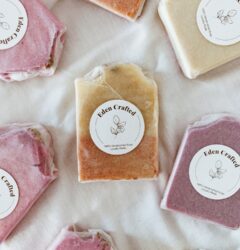


1 Comment
graliontorile
Very interesting details you have noted, thankyou for posting.